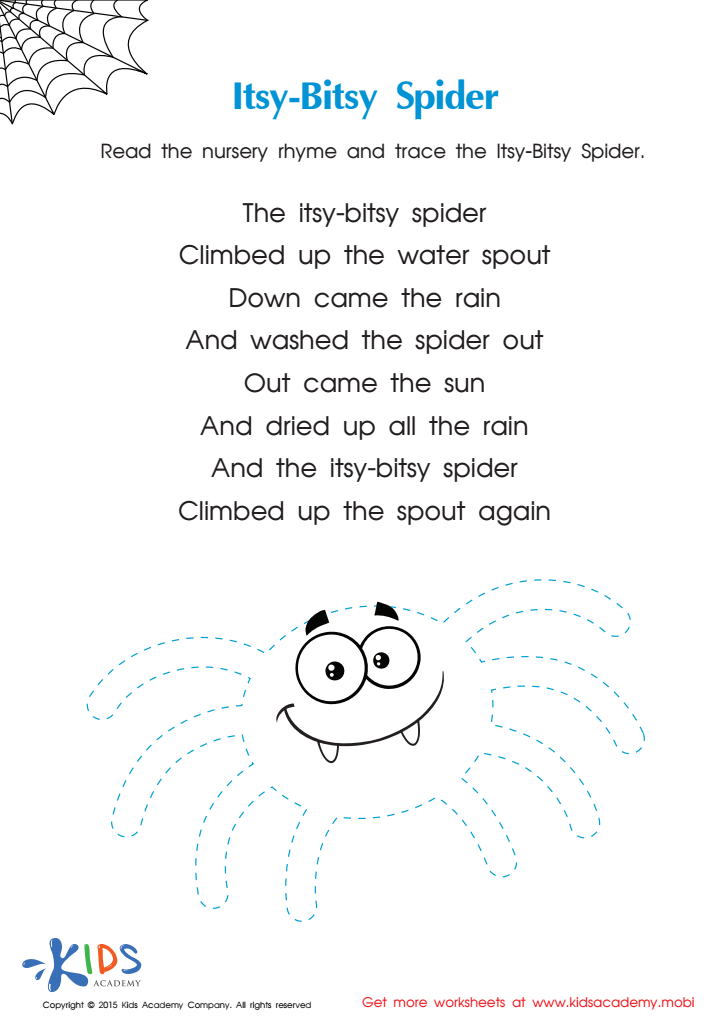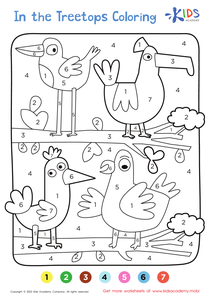First Grade Itsy Bitsy Spider Worksheets
1 filtered results
-
From - To
Free download and Free download Itsy Bitsy Spider Worksheets for Grade 1


Itsy Bitsy Spider Nursery Rhyme PDF Worksheet
The Benefits of Using Itsy Bitsy Spider Worksheets in Grade 1 Education
The Itsy Bitsy Spider is a classic nursery rhyme that every child loves to sing along to. In fact, kids enjoy it so much that they are often eager to learn more about its lyrics, meaning, and origins. That is why worksheets on Itsy Bitsy Spider are useful teaching tools for Grade 1 students. These worksheets help kids to learn while having fun, and provide a variety of opportunities to share their knowledge in creative ways.
One of the main advantages of Itsy Bitsy Spider worksheets is that they help students to develop many important skills, such as reading, writing, vocabulary, math, and fine motor skills. For example, reading comprehension exercises can help students to learn new words, understand the rhyme's structure, and identify the story's key elements. Writing exercises, such as tracing, copying, and filling in the blanks, can help students to practice their penmanship, spelling, and sentence formation.
Another useful aspect of Itsy Bitsy Spider worksheets is that they encourage creativity and imagination. Some worksheets may include coloring, drawing, or cut-and-paste activities, which allow students to express their own interpretations of the rhyme. By using different colors, textures, or materials, students can create unique spider webs, suns, and rains that reflect their personal styles and preferences. Such creative exercises help students to develop their artistic skills, self-expression, and emotional intelligence.
Moreover, Itsy Bitsy Spider worksheets can be a fun way for students to work together and share their learning with others. Group activities, such as word games, puzzles, or role-playing, can help students to develop their social skills, teamwork, and communication. By collaborating on a task, students can exchange ideas, ask questions, and support each other's learning. They can also take turns leading the group or presenting their work to the class, which can boost their confidence and public speaking skills.
Finally, Itsy Bitsy Spider worksheets can be adapted to various learning levels and styles. Teachers can modify the difficulty level of the tasks, based on the students' abilities and needs. For example, some students may need extra support or scaffolding, while others may require more challenge or extension. Teachers can also use different teaching methods, such as visual aids, songs, videos, or games, to cater to different learning preferences and intelligences. By allowing flexibility and differentiation, Itsy Bitsy Spider worksheets can reach a wider range of students and enhance their learning outcomes.
 Assign to My Students
Assign to My Students









